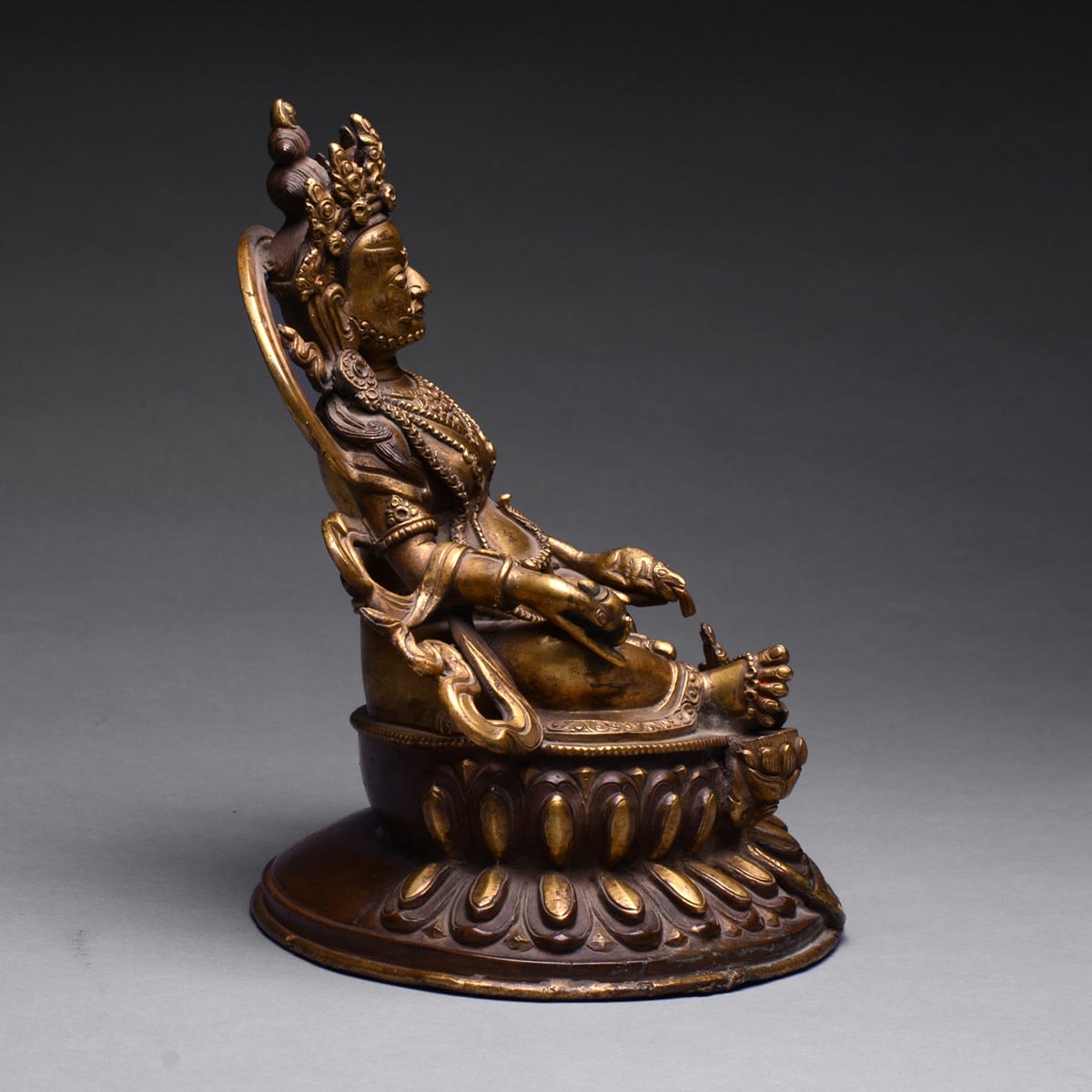Gilt-Bronze Figure of Jambhala, 16th Century CE - 18th Century CE
height 22.1 cm
height 8 3/4 in
height 8 3/4 in
CB.2891
Further images
This is a gilt-bronze sculpture of Jambhala. Jambhala has a kingly outlook, resting in the royal ease posture (maharajalilasana). He wears a skull crown, his square face frowning, accompanied by...
This is a gilt-bronze sculpture of Jambhala. Jambhala has a kingly outlook, resting in the royal ease posture (maharajalilasana). He wears a skull crown, his square face frowning, accompanied by his moustache and beard. He holds to his left a mongoose which spews precious jewels from its mouth, and a gem-shaped fruit to his right, while a lotus flower blossoms beneath his right foot. The sculpture has an assuring presence due to its considerable mass, while the maturity and precision of craftsmanship suggests that it is from a later period. Due to the lack of depth of the cavities in the bronze, though, we can assume that the jewels were never inlaid, rather than removed or stolen at a later date.
Jambhala is the principle wealth deity in Tantric Buddhism. Borrowed from the Hindu pantheon, he is usually depicted as pot-bellied and naked. Jambhala has a diverse range of appearances, including wrathful, kingly, and peaceful, each associating with a certain colour. A seated sculpture like this one is identified as the Yellow Jambhala. Yellow Jambhala is the most common depiction of the deity, since it showcases a number of traits which symbolises prosperity and wealth. His big belly, the gemstones, and the jewels, all suggest a scenario of utter abundance. Together with his might to chase away evil demons, Yellow Jambhala becomes an extremely popular figure among lay Tibetan Buddhist worshippers, since the deity fulfils their daily worldly needs.
Danny Ching
Jambhala is the principle wealth deity in Tantric Buddhism. Borrowed from the Hindu pantheon, he is usually depicted as pot-bellied and naked. Jambhala has a diverse range of appearances, including wrathful, kingly, and peaceful, each associating with a certain colour. A seated sculpture like this one is identified as the Yellow Jambhala. Yellow Jambhala is the most common depiction of the deity, since it showcases a number of traits which symbolises prosperity and wealth. His big belly, the gemstones, and the jewels, all suggest a scenario of utter abundance. Together with his might to chase away evil demons, Yellow Jambhala becomes an extremely popular figure among lay Tibetan Buddhist worshippers, since the deity fulfils their daily worldly needs.
Danny Ching











